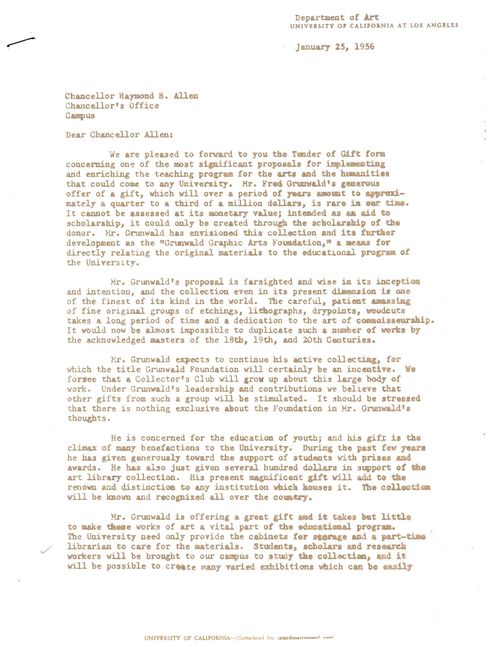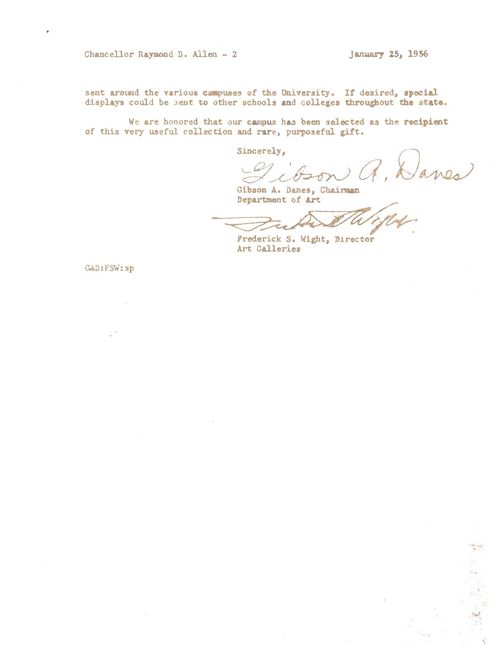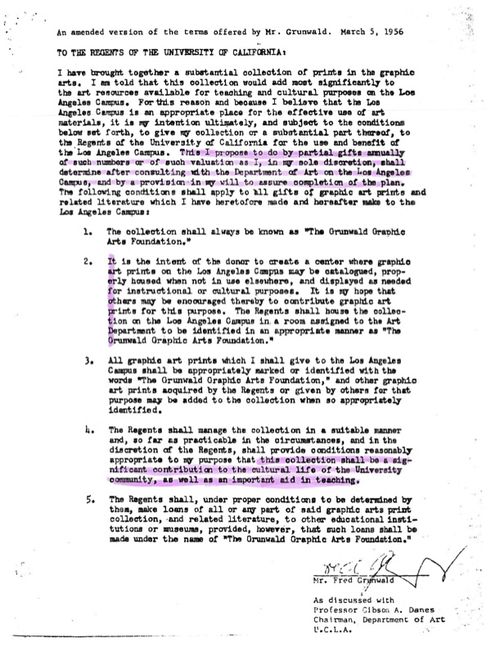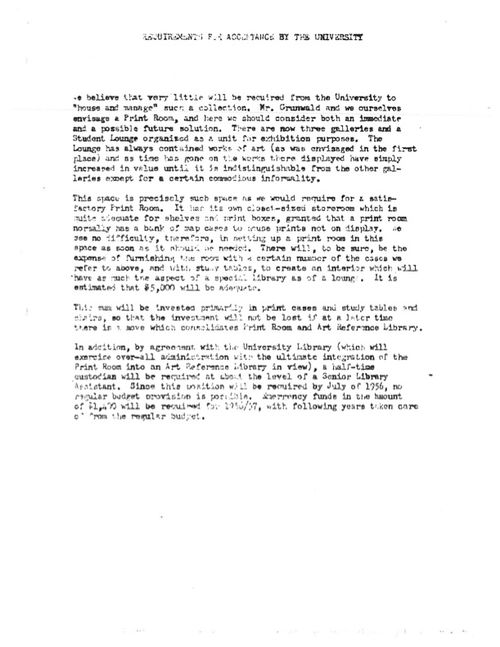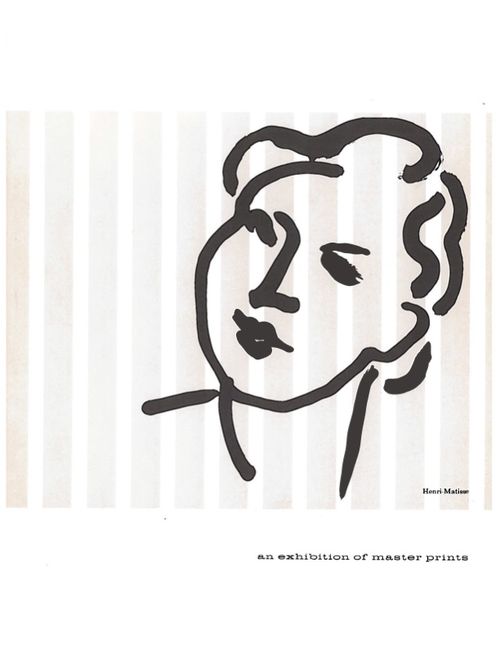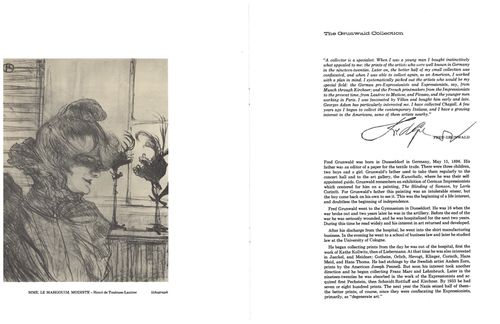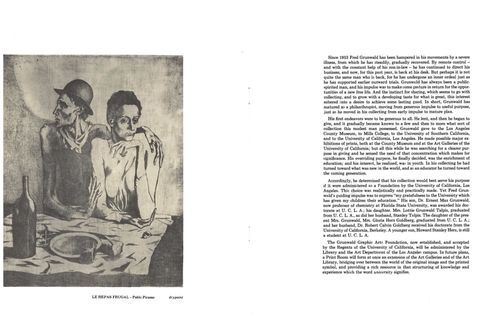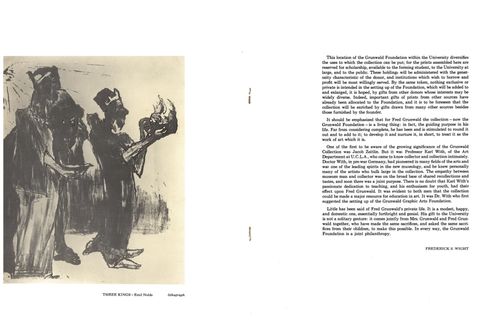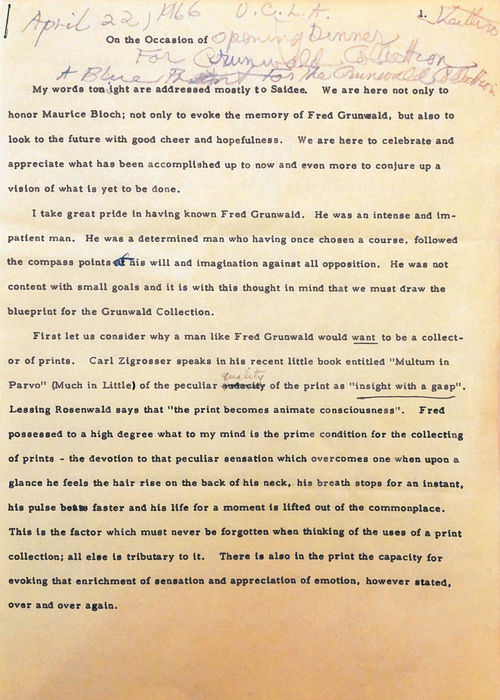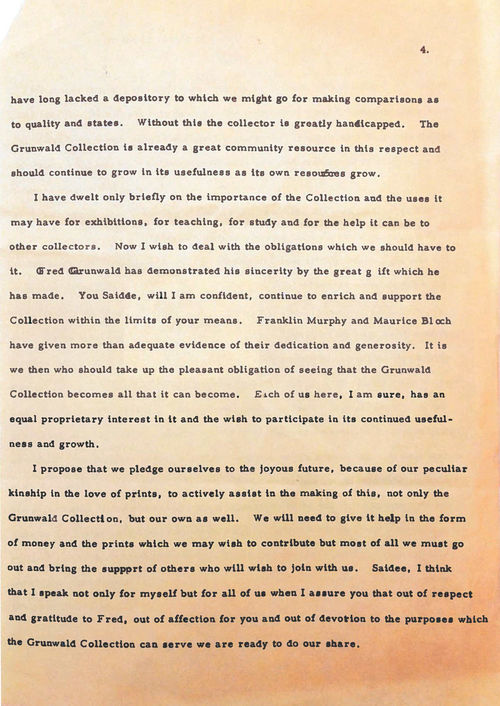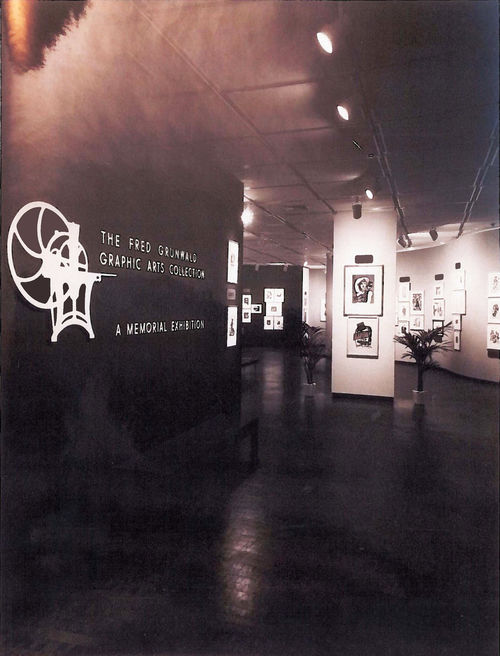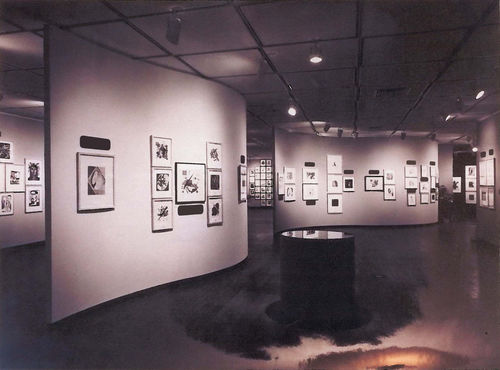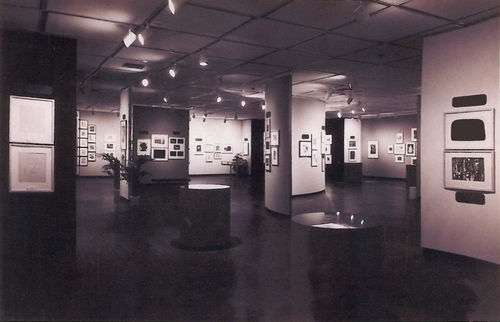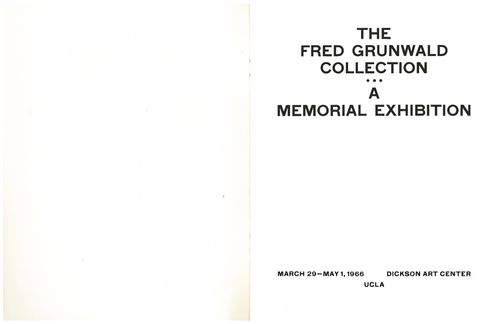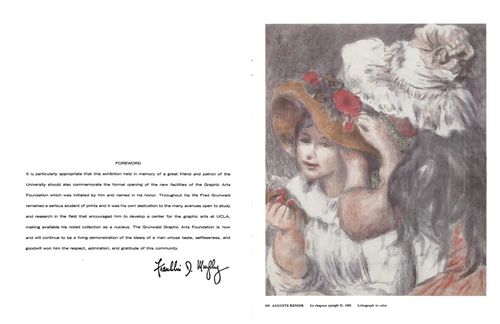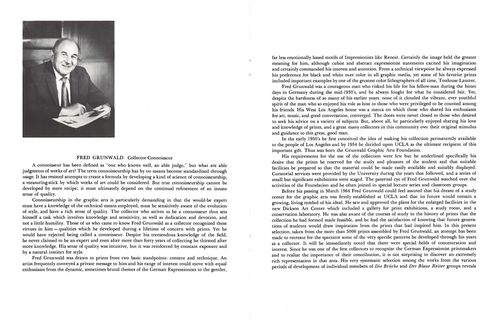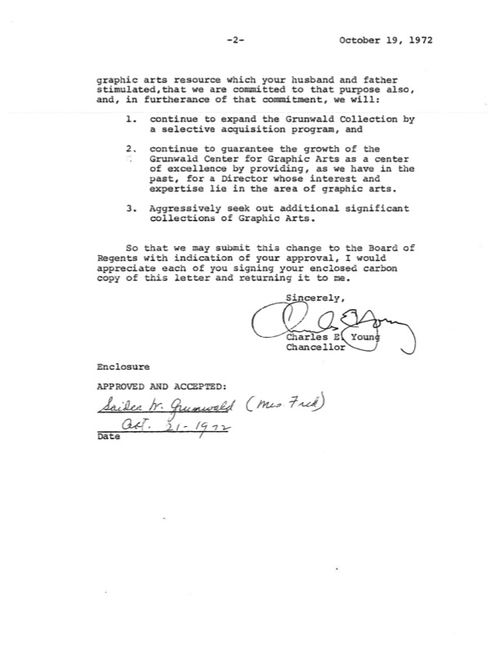UCLA Grunwald Center
The Grunwald Center for the Graphic Arts at UCLA began as the Grunwald Graphic Arts Foundation, established in 1956 upon Fred Grunwald's decision to donate a substantial portion of his print collection to the university. The documents below illustrate how the Grunwald Center, which today houses more than 45,000 works on paper, came to be.
Letter to UCLA Chancellor Raymond B. Allen
In this letter to UCLA Chancellor Raymond B. Allen, dated January 25, 1956, Frederick S. Wight, director of the UCLA Art Galleries, and Gibson A. Danes, professor and chair of the UCLA Department of Art, recommend that the university accept Grunwald's gift. They maintain:
Mr. Grunwald's proposal is farsighted and wise in its inception and intention, and the collection even in its present dimension is one of the finest of its kind in the world. The careful, patient amassing of fine original groups of etchings, lithographs, drypoints, woodcuts takes a long period of time and a dedication to the art of connoisseurship. It would now be almost impossible to duplicate such a number of works by the acknowledged masters of the 18th, 19th, and 20th Centuries.
Founding Documents
These documents, dated March 5, 1956, set out the terms of the establishment of the Grunwald Graphic Arts Foundation at UCLA. Grunwald describes his goals for the foundation:
It is the intent of the donor to create a center where graphic art prints on the Los Angeles campus may be catalogued, properly housed when not in use elsewhere, and displayed as needed for instructional or cultural purposes. It is my hope that others may be encouraged thereby to contribute graphic art prints for this purpose.
Download Founding Documents, March 5, 1956 [PDF, 2pp, 1.2MB]
An Exhibition of Master Prints, 1956
To commemorate the establishment of the Grunwald Graphic Arts Foundation, UCLA curated an exhibition of master prints from the Grunwald Collection at the Dickson Art Center. The exhibition catalogue features a short essay about Fred Grunwald and his collection by Frederick S. Wight, who writes:
His first endeavors were to be generous to all. He lent, and then he began to give, and it gradually became known to a few and then to more what sort of collection this modest man possessed. Grunwald gave to the Los Angeles County Museum, to Mills College, to the University of Southern California, and to the University of California, Los Angeles. He made possible major exhibitions of prints, both at the County Museum and at the Art Galleries of the University of California; but all this while he was searching for a clearer purpose in giving and he sensed the need of that concentration which makes for significance. His overriding purpose, he finally decided, was the enrichment of education; and his interest, he realized, was in youth. In his collecting he had turned toward what was new in the world, and as an educator he turned toward the coming generation.
Download catalogue for An Exhibition of Master Prints, 1956 [PDF, 10pp, 7.8MB]
Jake Zeitlin speech remembering Fred Grunwald
Rare book dealer Jake Zeitlin was a friend to Fred Grunwald, and was among the first to tout the significance of Grunwald's collection of prints. Shortly after Grunwald's death in 1964, Zeitlin gave this speech at a dinner celebrating the memorial exhibition that marked the formal opening of the new facilities of the Grunwald Graphic Arts Foundation at UCLA (see documentation of the exhibition below). Titled "A Blueprint for the Grunwald Collection," it describes in vivid detail his friend's passion for collecting prints:
First let us consider why a man like Fred Grunwald would want to be a collector of prints. . . . Fred possessed to a high degree what to my mind is the prime condition for the collecting of prints—the devotion to that peculiar sensation which overcomes one when upon a glance he feels the hair rise on the back of his neck, his breath stops for an instant, his pulse beats faster and his life for a moment is lifted out of the commonplace. This is the factor which must never be forgotten when thinking of the uses of a print collection; all else is tributary to it.
THE FRED GRUNWALD COLLECTION: A MEMORIAL EXHIBITION, 1966
In March of 1966, two years after Fred Grunwald's death, UCLA staged a memorial exhibition of prints from his collection. Extant images of the exhibition show hundreds of framed prints covering the walls of the Dickson Art Center, a salon-style hang that emphasizes the scope and range of the collection. In his essay in the accompanying catalogue, Grunwald Graphic Arts Foundation Director E. Maurice Bloch extols Grunwald's insatiable interest in prints:
Connoisseurship in the graphic arts is particularly demanding in that the would-be expert must have a knowledge of the technical means employed, must be sensitively aware of the evolution of style, and have a rich sense of quality. The collector who strives to be a connoisseur thus sets himself a task which involves knowledge and sensitivity, as well as dedication and devotion, and not a little humility. Those of us who came to know Fred Grunwald as a collector recognized these virtues in him—qualities which he developed during a lifetime of concern with prints. Yet he would have rejected being called a connoisseur. Despite his tremendous knowledge of the field, he never claimed to be an expert and even after more than forty years of collecting he thirsted after more knowledge. His sense of quality was intuitive, but it was reinforced by constant exposure and by a natural instinct for style.
Grunwald Graphic Arts Foundation Name Change, 1972
In 1972, UCLA decided that the Grunwald Graphic Arts Foundation needed a name change. In a letter to Fred Grunwald's widow, Saidee, and children, Ernest and Lotte, Chancellor Charles E. Young notes that using the term "Foundation" to refer to both the Grunwald collection and to the physical location where the collection is held has caused confusion. He proposes that the Grunwald Graphic Arts Foundation become two entities: the Grunwald Collection of Graphic Art and the Grunwald Center for the Graphic Arts.


